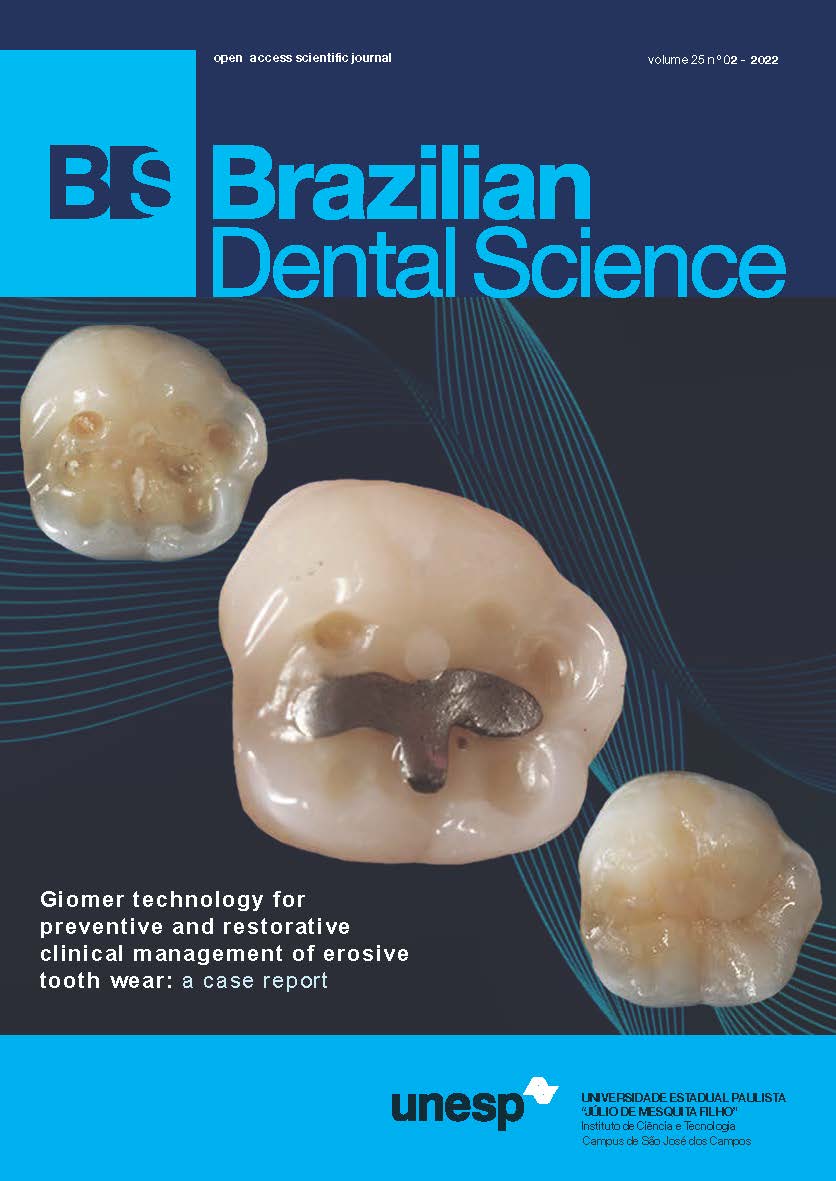Effect of resin infiltration and bleaching on surface roughness and microhardness of human enamel with induced white spot lesions
DOI:
https://doi.org/10.4322/bds.2022.e3026Abstract
Objective: To comparatively evaluate the effect of resin infiltration, bleaching and bleaching followed by resin
infiltration on the surface roughness and microhardness of human enamel with induced white spot lesions
(WSLs) and their resistance to acidic challenge. Material and Methods: Sixty human specimens were randomly
divided into three groups (n=20) according to the treatment modality applied; group I Icon® resin infiltration,
group II bleaching and group III bleaching followed by Icon® resin infiltration. For each treatment modality, 10
specimens were tested for surface roughness and another 10 for microhardness. WSLs were artificially induced
in all specimens and after treatment, all specimens were subjected to acidic challenge. Surface roughness was
measured by the tapping mode of the atomic force microscope (AFM) and microhardness was measured by
digital Vickers hardness tester at baseline, after induction of WSLs, after treatment and after acidic challenge.
Results: Groups I and III showed significant reduction in surface roughness after treatment, while group II showed
significant increase. Groups I and III showed significant increase in the microhardness after treatment, while
group II showed insignificant increase. The three tested groups showed significant increase in surface roughness
values and significant reduction in microhardness after acidic challenge. Conclusion: Resin infiltration and
bleaching followed by resin infiltration reduced the surface roughness and enhanced the microhardness of the
WSLs. The three treatment modalities failed to resist acidic challenge resulting in increasing surface roughness
and reducing microhardness.
KEYWORDS
AFM; Bleaching; Microhardness; Resin infiltration; White spot lesions.
Downloads
Downloads
Published
How to Cite
Issue
Section
License
Brazilian Dental Science uses the Creative Commons (CC-BY 4.0) license, thus preserving the integrity of articles in an open access environment. The journal allows the author to retain publishing rights without restrictions.
=================




























